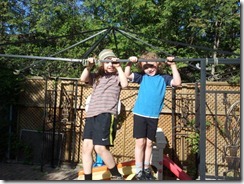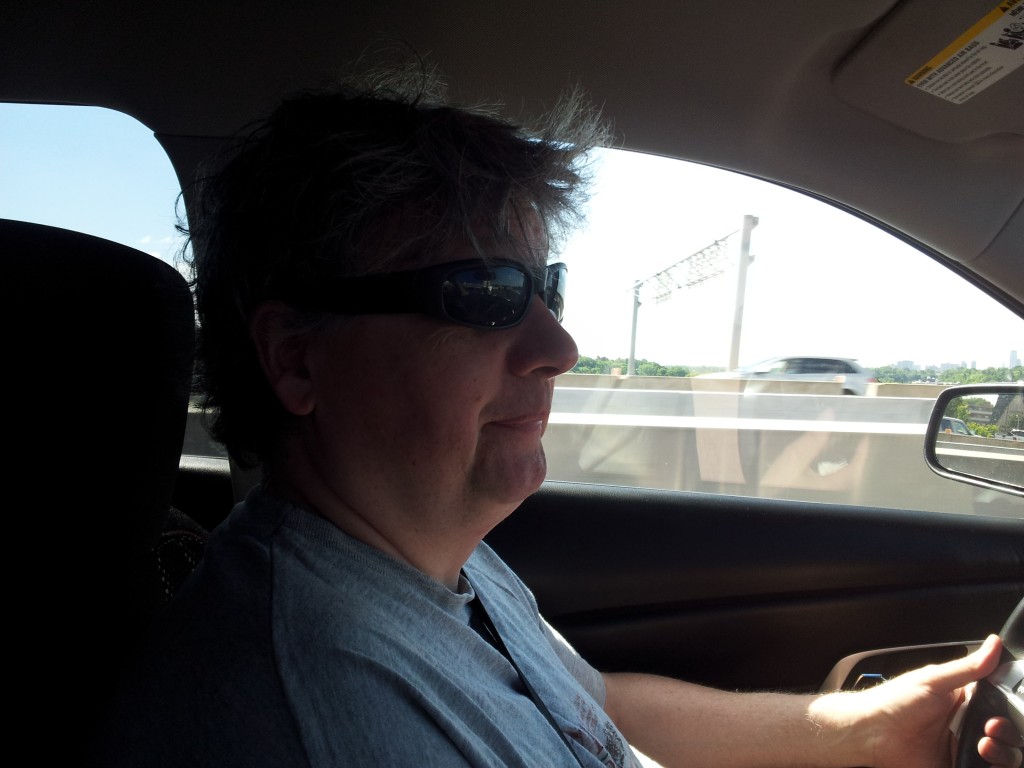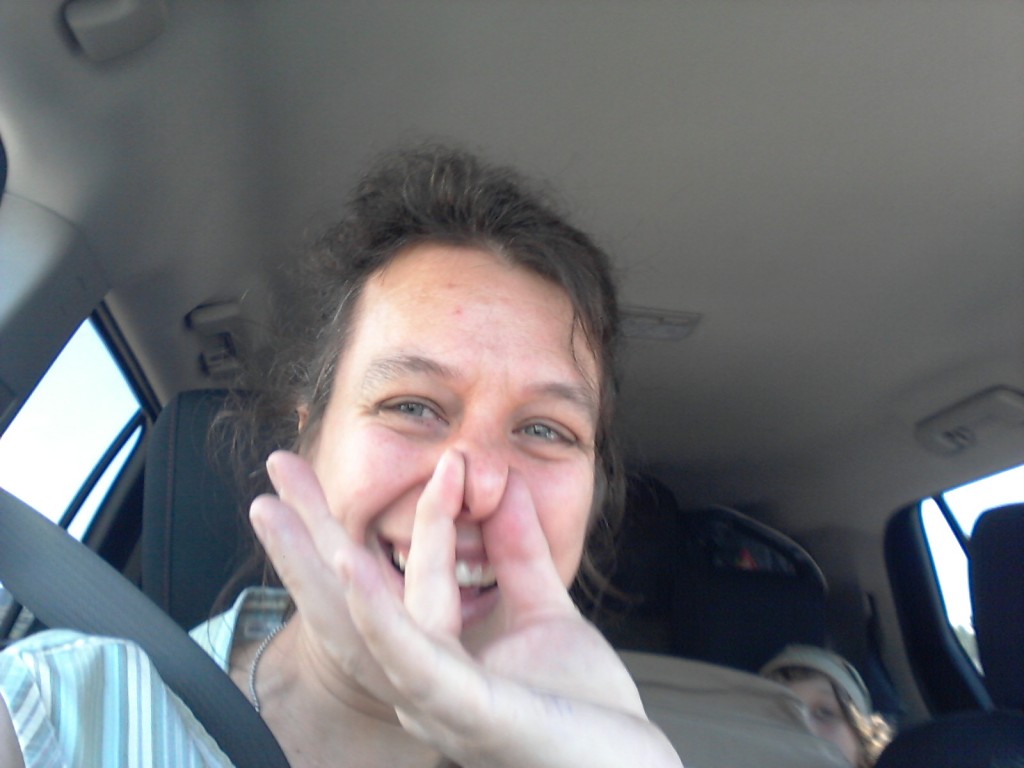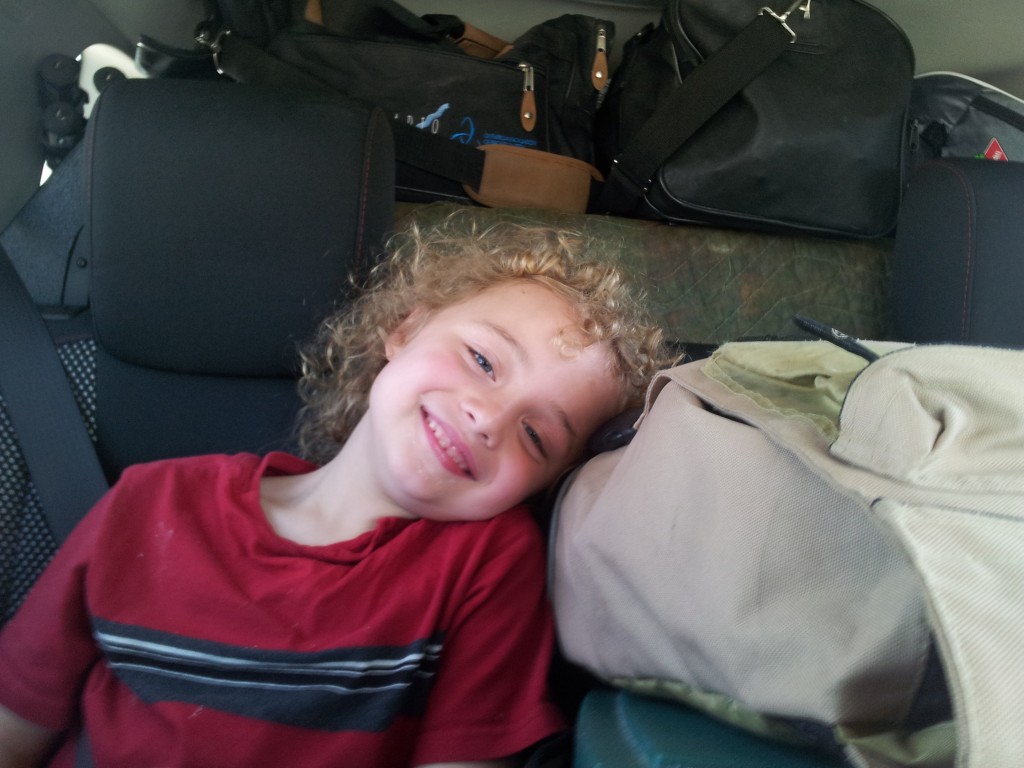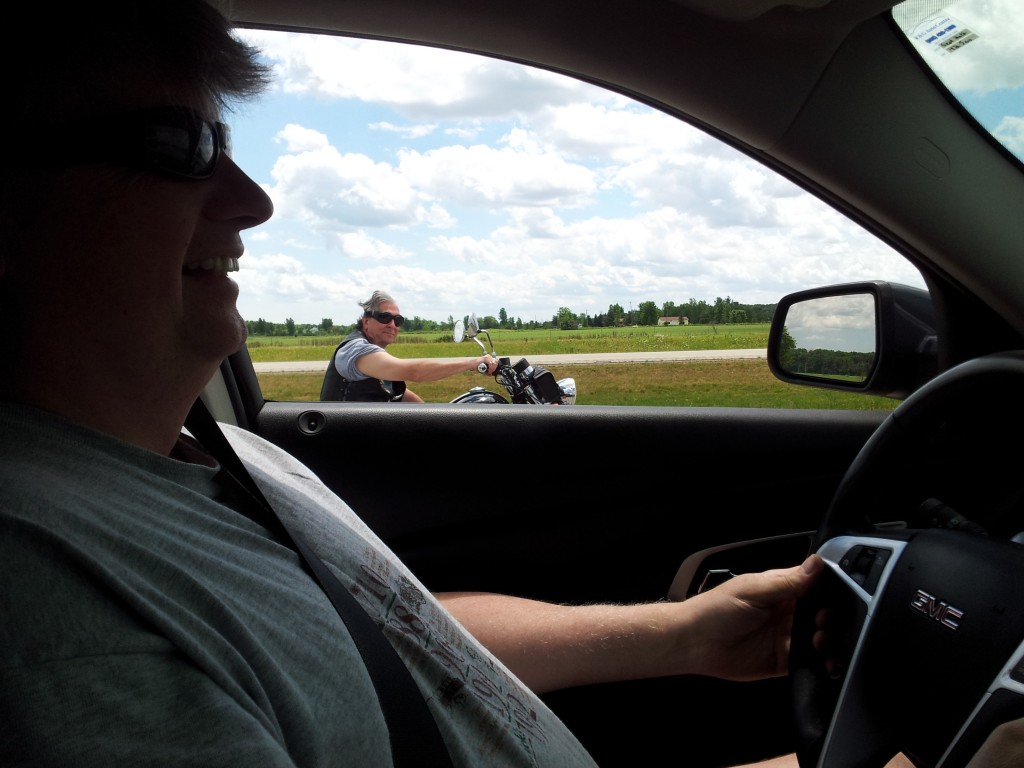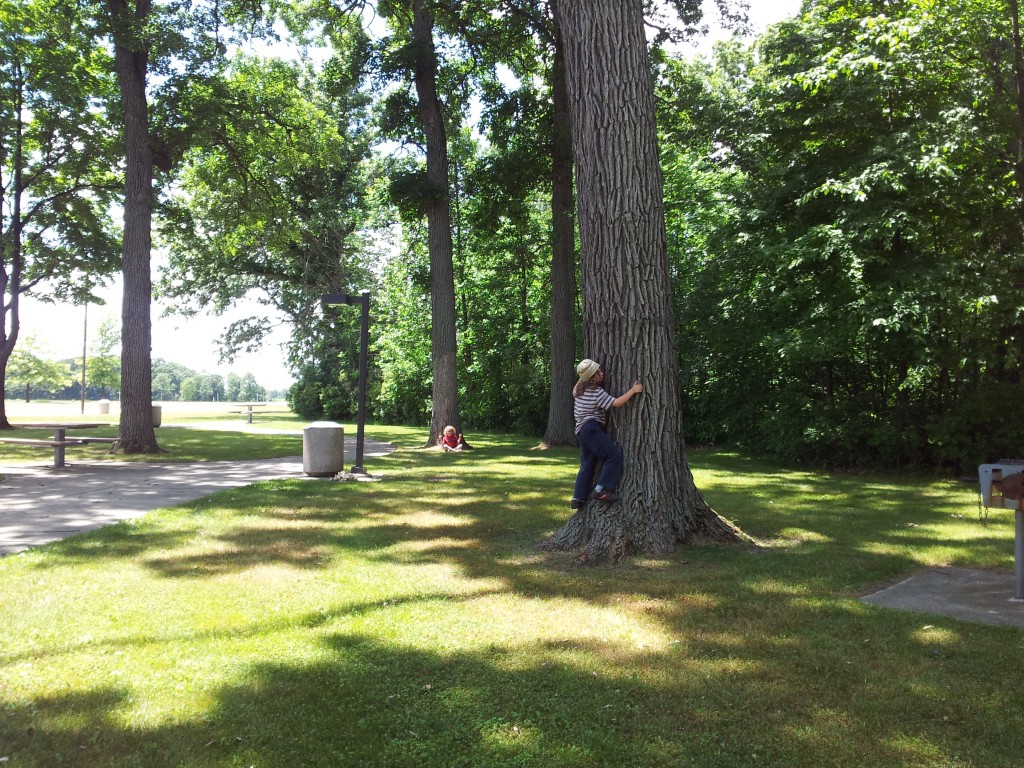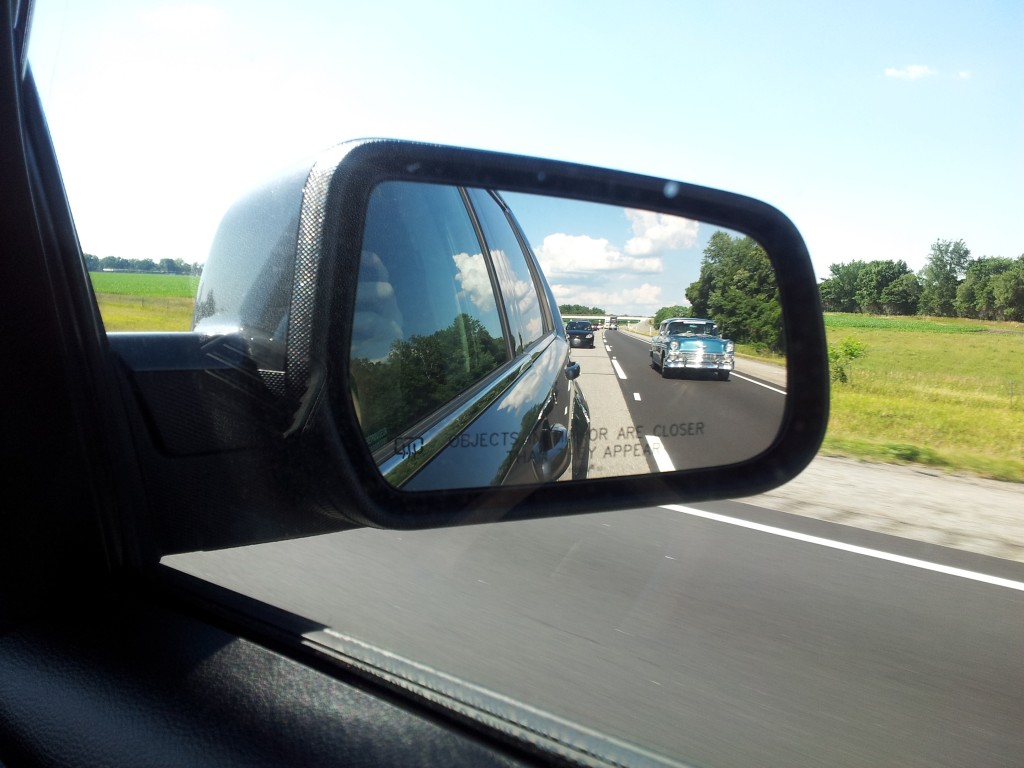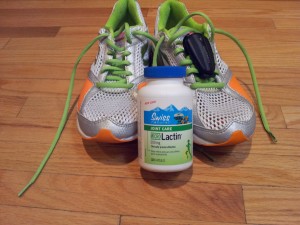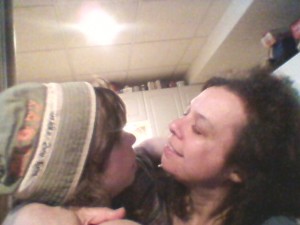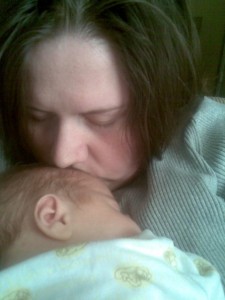I am fortunate enough to have two children who travel well, at least by car. We have not yet experimented with air travel, but I have a feeling that once we got past the airport chaos and onto the plane, they would be fine. We are not quite ready for that, so for now we are sticking to the road trips.
Last weekend, we drove to Elkhart, Indiana. It’s a journey of about eight hours, which does not include time spent on the border crossing and any pit stops. We planned as well as we could, given that we only had a day in which to plan. I packed up stuff for an en route picnic, and made sure the boys had their favourite toys in the car with them. I even had my laptop handy in case I had to calm them down by playing DVD’s for them.
The drive down could not have gone better. The guy at the border cheerfully welcomed us into the United States, despite my six-year-old informing him that “Daddy always be’s crazy.” Shortly after crossing the border, we stopped for our picnic. Everyone had fun, and there were no complaints as we piled the kids back into the car for the remainder of the drive.
The drive home was a different story altogether. I wouldn’t say it was disastrous, exactly, but it was a little fraught with stress. It started with lost Lego. I wrote recently about George’s Lego, and how it can never, ever be lost.
Right before leaving the Elkhart city limits, we stopped for a leisurely dinner. We ate our food, paid and left. When we had been driving for about an hour, George suddenly started asking for his Lego. This surprised us, since we had assumed he had it with him. We pulled over and couldn’t find the Lego anywhere in the car. A phonecall to the restaurant confirmed that George had left it on the table.
There was no way we were going to force our child with autism to do without the object that is a big source of comfort to him – I mean, he sleeps with his Lego – so we drove back to Elkhart and got it. Disaster was averted and peace reigned once again.
But only for a little while.
By the time we embarked on our return journey, the kids were tired, cranky and overstimulated from a packed weekend. It is understandable that they didn’t feel like spending eight hours stuck in the car. I didn’t feel like spending eight hours stuck in the car.
With about five hours of the drive left to go, George started saying, “I want to go home. I want to be home in ten minutes.”
Well, in the absence of rocket launchers on the car, that wasn’t going to happen. We tried to talk George through his increasing anxiety. Even James, in his sweet way, was trying to comfort his brother.
“Don’t worry, George. We’ll be home tonight.”
Instead of calming down, George was getting more and more anxious, so we did what we always do when he needs to be distracted: we started throwing out math questions at him.
George loves numbers. He’s been able to count to 100 in a variety of increments since he was three, and he was doing multiplication in his head long before anyone taught it to him at school. When he’s asked a math question, he cannot resist answering it. It’s a marvellous way to reduce his stress.
James started playing along and pretty much took over. He was asking George one math question after another. What’s 8 plus 8? What’s 32 minus 7? What’s 5 times 5?
The math questions eventually morphed into nonsense questions. What’s cow plus water? What’s house plus airplane? What’s paper plus shoes?
Every time James asked one of these questions, he provided an equally nonsense answer. By the time this had been going on for a while, the kids were in fits of giggles. Come to think of it, me and my husband were too. It was hilarious.
Then James asked the following question: What’s James plus George?
We all looked at James, waiting for the answer. When it came, it brought tears to my eyes.
James plus George equals love.
(Photo credit: Kirsten Doyle)





